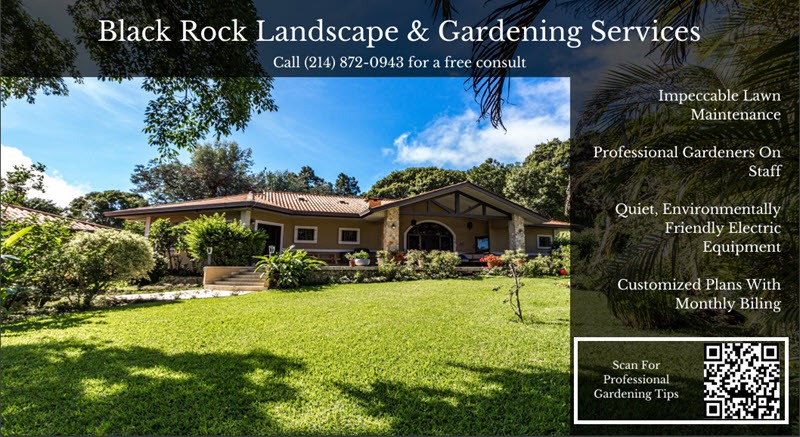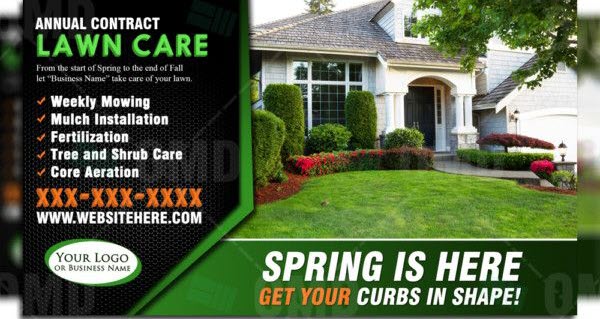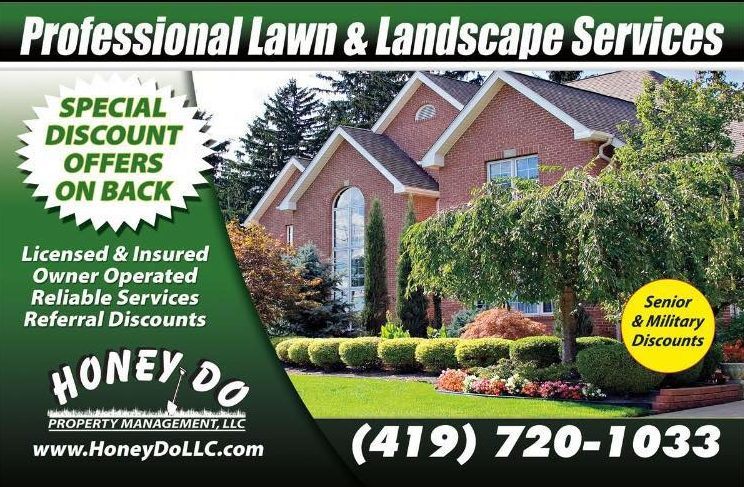
As Spring gets well under way, you’re likely getting a lot busier – at least I hope so. While the current economic climate has been difficult to navigate, evidence is growing that with so many consumers at home, they’re investing more into improving and maintaining their property. That’s where automated landscaping postcards come into play.
So here’s an opportunity for you to grow. All you need is the right fertilizer – and for landscaping companies, no media seems more fertile than direct mail. Our clients (and their agencies) use automated landscaping postcards because they’re a great way to directly reach specific local areas.
Of course, managing a direct mail marketing campaign can be, well, thorny. Fortunately, Postalytics automates the entire process of launching your campaign, tracking results, and fine-tuning your mailings, saving you time and money so you can focus on your customers and stay in the green even when people are trying to spend less.
Direct Mail Landscaping Postcards
Cost-effective and eye-catching ways to promote your landscaping business
Although some direct mail marketers use letters, most landscaping companies use postcards. That’s because postcards are not only less expensive, but also because a colorful postcard looks far more attractive and compelling to potential customers.
Take a look at these examples:


You can see how these postcards not only communicate value, but also instantly show the value of a keeping your home looking lush and beautiful. Unlike other media which your audience can ignore, you have to at least glance at a postcard because it’s arriving in your mailbox. After all, checking the mail is a daily routine for everyone. You can’t say the same about a social media ad or radio commercial.
Automated Postcards Save Money & Eliminate Complexity

Even just a few years ago, managing a direct mail campaign could be extremely frustrating – and costly. You’d be stuck mailing at minimum quantities of thousands of postcards so you couldn’t send just a few at a time. Finding the right mailing list could mean contacting several list brokers. And creating a postcard required hiring a graphic designer – with any changes, even just one word, costing hundreds of dollars.
Say goodbye to all that hassle and expense. Thanks to direct mail automation, you can easily manage your campaign and get a whole lot more value. That means a greener bank account for you.
Now you can run automated landscaping postcard campaigns on your own schedule – making it easy to reach new prospects and follow up with leads you’ve already generated.
Triggered Landscaping Postcards Sent One At A Time
For those who are tracking their customers and prospects in a CRM, a whole new form of automated messaging is available. Triggered marketing is designed to “drip” out emails and postcards to your audience when certain criteria are met.
For example, maybe you’ve spoken to a customer who hasn’t yet made a decision. Rather than sitting around and waiting for them to call, you can send triggered postcards – say 10 days, 20 days, and 45 days after your conversation. Once the campaign is setup, your CRM automatically sends Postalytics a notification to send out the scheduled postcard.
The best part is that with automated direct mail, you get great pricing on sending out one or two postcards per day — with the same service that landscapers get who send 10,000 postcards all at once.
And when you’re prospecting for new customers, why would you even want to send thousands of landscaping postcards? Think about what would happen:
- With a decent response rate, you’d get dozens and dozens of calls and clicks to your web site over the course of just a few days. Could you follow up with all those prospects in a timely manner? If not, you could lose that potential business.
- If you run around providing quotes and win lots of new customers all at once, can you handle that increased business right away? If not, you could lose the business you worked hard to get.
You know it takes time to nurture new leads, just as it takes time to nurture a garden. The more attention you can pay to a few leads at a time, the more successful you’ll be in the long run.
So instead of sending 10,000 pieces all at once, why not send a few hundred every few days? That way, the lead flow will be steady and your business will run a lot more smoothly.
Designing Your Postcard: What Drives Higher Response?

Landscape design can be challenging enough. But designing an effective direct mail postcard can take more time away from running your business, plus get costly if you have to hire a designer. At Postalytics, we’ve created an online platform that not only makes it easy to design your postcard, but also assures that it adheres to USPS standards so you can mail it at the best possible rate.
So what should you include on your postcard? Based on what our landscaping clients tell us, these tips will help you enjoy a higher response rate:
- Focus on your customer, not on your business: Yes, it’s tempting to talk about your reputation, your knowledge and your experience, but what about your prospect? Present your experience and expertise in a way that shows how customers benefit.
- Present compelling benefits, not the product or service. You’ll get better results when you “sell the sizzle, not the steak.” For example, fertilizer is a product, but the growth it delivers is what the customer really wants.
- Prove your reputation: If you have testimonials, be sure to use them in small blurbs on your postcard. You can rave all you want about your service, but those claims become far more compelling when they come from an actual customer
- Write engaging and compelling headlines: The headlines you use are crucial for a successful campaign. Use vivid, action words. Instead of “You could save $100,” consider “Save $100 now.” Just as you prune a bush or tree, trim back all those words into what’s really essential.
- Use your own photos: Make it a practice to ask customers if you can take photos of their landscaped yards and use them on your postcard. Local photos will be far more relevant than generic stock photos, which may not resemble yards in your area at all.
- Focus on a great offer: See below for more details, but an offer that’s irresistible will definitely boost response over a less compelling offer. If you don’t have an offer at all, don’t count on a high response rate.
“What’s in it for me?”
If you want a high response rate, your landscaping postcards should offer your customers a great deal. It’s a very simple concept but it really requires that you know your audience, and to target offers to specific segments.
Direct mail marketers know that better the offers tend to generate higher response rates. On the flip side, you don’t want your offer to be too compelling because that can bring customers who will only do business with you once. You want repeat business to make the most of your marketing budget.
For example, one offer that tends to work well is a relatively significant discount for a first-time customer. Think you’re just giving away money for no good reason? Think again. Consider this example. One mailing simply promotes your business with no offer. In the other, you offer a 20% discount on a first job.
| Mailer 1 | Mailer 2 | |
| Offer | No Offer | 20% Discount |
| Audience | 2,000 | 2,000 |
| Mailing Cost ($.65/each) | $1,300 | $1,300 |
| Response Rate | 0.50% | 1% |
| Responses | 10 | 20 |
| Cost per response | $130 | $65 |
As you can see, your cost per response could be a lot less with a compelling offer. Of course, that doesn’t account for your costs of fulfilling that offer – working at a discount.
A more complete analysis shows that while you’re giving up some profit on your first job, repeat business adds back more profit. Building on the above data, let’s assume:
- An average sale of $250
- 50% of the responders end up signing up for an initial job, and
- 40% of the initial job takers sign up for an ongoing maintenance contract
| Mailer 1 | Mailer 2 | |
| Initial sales (50% of those who respond) | 5 | 10 |
| Initial revenue | $1,250 ($250/sale) | $2,500 ($250/sale) |
| Conversion Rate to another project | 40% | 40% |
| Conversions | 2 | 4 |
| Additional Revenue (at $250) | $500 | $1,000 |
| Total Revenue | $1,750 | $3,500 |
| Return on initial postcard mailing | $450 or 35% | $2,200 or 169% |
As you can see, by making an enticing offer, you’ve attracted more prospects. Yes, you made less on the first job for a new customer, but future projects from a larger group more than make up for that “loss.”
You should test offers on an ongoing basis so that you can give away enough away to get more response, but not give away more than necessary to win the same business.
Also be sure to present your offer in a way that drives immediate action. How? Set an expiration date for your offer. That’s what it takes to get a prospect to take action sooner rather than later.
Focus On The Right Audience

Pruning your list down to the best prospects
So you have a compelling landscaping postcard and an offer no homeowner could refuse. Where should you mail your postcards?
Obviously you have a territory or area you mostly service, but why not use direct mail to target more precisely? Sure, you can probably work in many locations, but if you’re already working in a specific area, mailing more frequently into that area can help you run your business more efficiently.
If, for example, you already have 10 customers in an area of one square mile, then adding customers within that area can earn you more money. That’s because your crews don’t have to drive back and forth across town, so they can get more work done in less time. For example, a crew might be able to get three jobs done per day instead on only two.
Check out the Postalytics platform and you’ll see how easy it is to target very specific local regions so you can cover these areas with landscaping postcards without wasting money sending mail to areas many miles away.
In some cases, you may want to mail to lists that include actual names. But it can be more effective to send a “resident” mailing. That’s a postcard that’s sent to a household, not to a specific name. This approach will cost less, but you’ll want to test it to make sure it performs as well. That’s because including a name can boost your response rate and you may find that targeting specific homeowners by attribute such as age, income, and other criteria offers more opportunities to target mailings more precisely.
Just make sure to eliminate addresses for apartment buildings. And don’t bother mailing to P.O. boxes because you just don’t know whether that P.O. box represents a homeowner or not.
Keep on mailing. Keep on growing.

As I’ve explained, using landscaping postcards to grow your business offers enormous potential. But once someone does business with you one time, they become even more apt to contact you again. Why wait? Send a postcard after you complete a job, making another offer for additional services or ongoing maintenance contract. Send another 30 days later, and maybe even another 60 days later.
Too complex? Not at all. Sending these “triggered drip” campaigns is easy with Postalytics. Even if that campaign is designed so that it triggers only a few postcards sent each day, you still pay about the same as if you’d sent thousands at once.
And we’ve made it easy to not only send mailings, but accurately track your results so you know what’s working and what’s not. With mailings that automatically include a unique offer code, you’ll know which postcards are driving high traffic to your website or generating the most phone calls.
Hopefully I’ve planted at least a seed in your mind on how to use direct mail postcards to grow your business. Start cultivating new customers and do a better job nurturing your existing clients.
About the Author

Dennis Kelly
Dennis Kelly is CEO and co-founder of Postalytics, the leading direct mail automation platform for marketers to build, deploy and manage direct mail marketing campaigns. Postalytics is Dennis’ 6th startup. He has been involved in starting and growing early-stage technology ventures for over 30 years and has held senior management roles at a diverse set of large technology firms including Computer Associates, Palm Inc. and Achieve Healthcare Information Systems.
